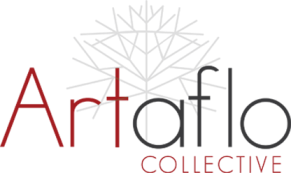 Li Rui (李瑞)
Li Rui (李瑞)
Li Rui (1929) is from Lufeng, Guangdong Province. As a child, his father taught him drawing. From 1943 on, he sold his paintings all over the region. In the period 1949-1952, he established an art institute in Lufeng District. In 1958 he joined the art editorial board of the Lufeng Publishing House; he joined the Lufeng District Cultural Institute in 1960 and in 1964, he became a designer with the Lufeng District No. 2 Light Industrial Art Woodcarving Factory. He returned to the Lufeng District Cultural Institute in 1978.
Li specializes in Chinese painting and religious painting.
In the past 60 years, he has traveled all over the country, including the mountains and rivers and the folks in Lingnan, and has created hundreds of fine works. “Fisherman”, “A Fishing Song from Beijing”, “Military and Civilian Gala”, “Fish and Water”, “Spicy Tea and Wine”, “Three Gorges”, etc., have a new creation, and have a strong lifestyle and local characteristics.
His works have participated in many national and international art exhibitions. He has participated in Japan, South Korea, the United States, the Philippines, Hong Kong, Macao, Taiwan, Singapore, Thailand, Brazil and other countries and regions. He has won international gold, silver, bronze and gold medals. , Gold Cup, highest achievement award, and awarded “World Silver Artist”, “International Silver Artist”, “World Outstanding Chinese Artist”, “World Cultural Celebrity Achievement Award”, “World Merit Artist”, “World Calligraphy and Painting Art Celebrity Certificate” “And many other honorary titles.
His work was selected for the “Welcome to the ’97 Hong Kong’s Return to Chinese Painting and Calligraphy Competition” and was exhibited at the China Art Museum in Beijing. He
won the award for outstanding figure painting by the Ministry of Culture, Hong Kong, Macao and Taiwan Culture Department; His works won the second prize of the “China Art Newspaper” Contest of the Chinese Writers Association; his works won the gold prize at the “’97 Global Figure Painting Exhibition”; his works won the gold prize at the ’98 Hong Kong International Calligraphy and Painting Exhibition; 1996, 1997, and 1998. A number of international gold awards in the Southeast Asian Painting Exhibition won the title of National Baijie Calligrapher and Painter in 1998, and a special certificate was issued by the National Calligraphy and Painting Review Committee. “Kunlun Journey” and “Mount Everest” were compiled into a century-old classic “Complete Works of Chinese Famous Painting and Calligraphy”.
His works have been published in newspapers such as People’s Daily and World Daily for many times. Many of his works have been collected by many art galleries, memorials, museums, art clubs, temples, and folk collections at home and abroad. (He once painted 108N whole-body portraits of famous monks in the country and a large number of religious paintings, including Zhejiang Lingyin Temple and Putuo Mountain Puji Temple in the collection of more than 30 pieces). His works and biographies have been compiled into more than a hundred famous painting collections such as “Chinese Art Yearbook” and “World Cultural Celebrities’ Cihai”, and are included in the international Internet network.
1929 Born in Lufeng, Guangdong Province, China
1958 Joined art editorial board, Lufeng Publishing House
1978 Lufeng District Cultural Institute
